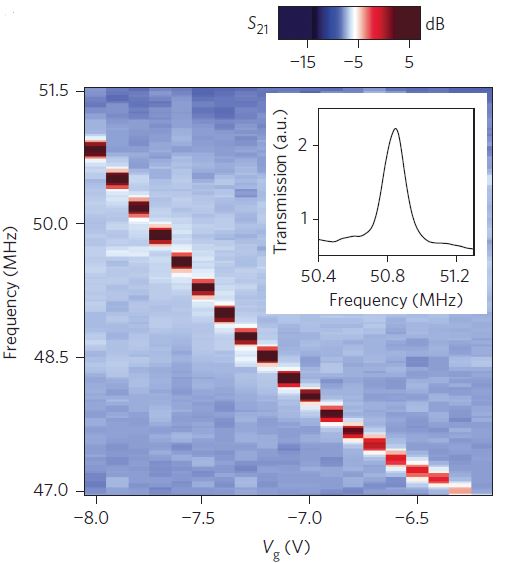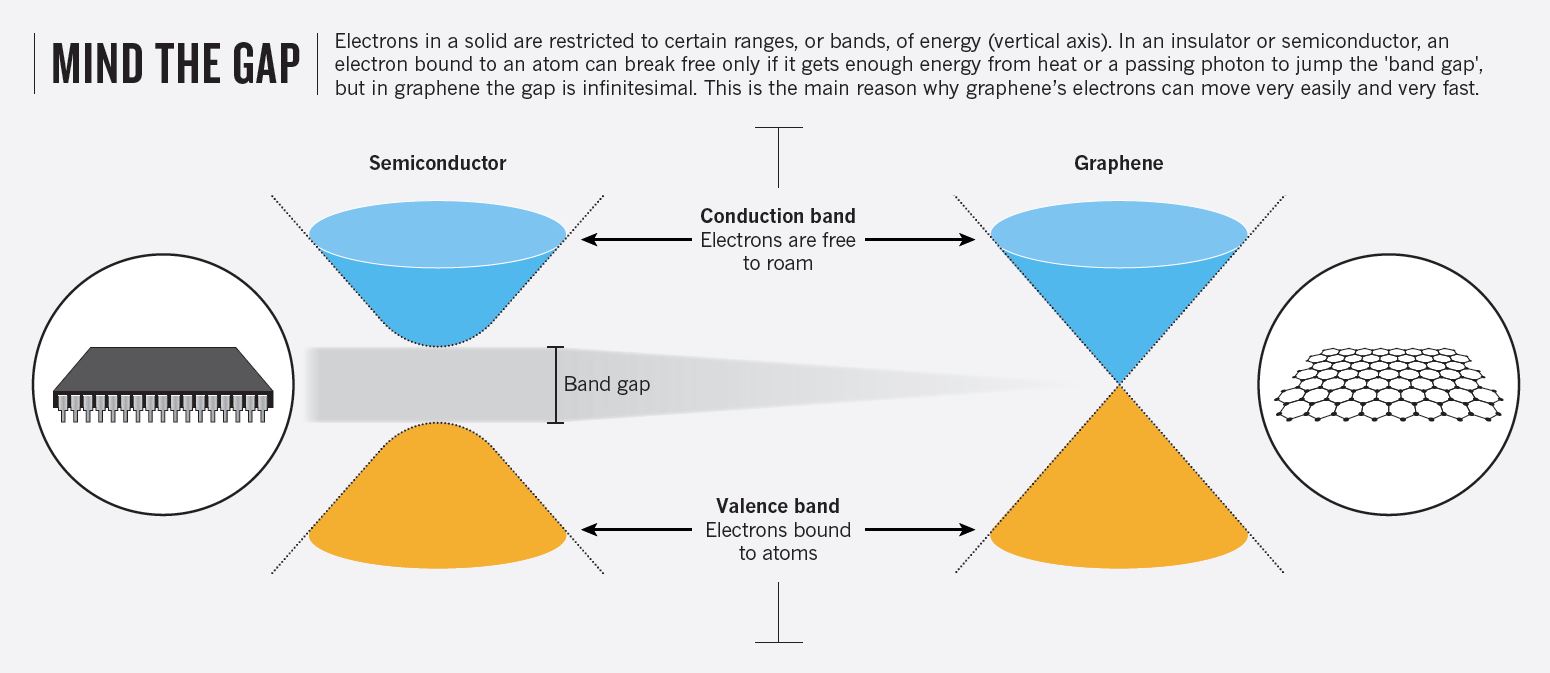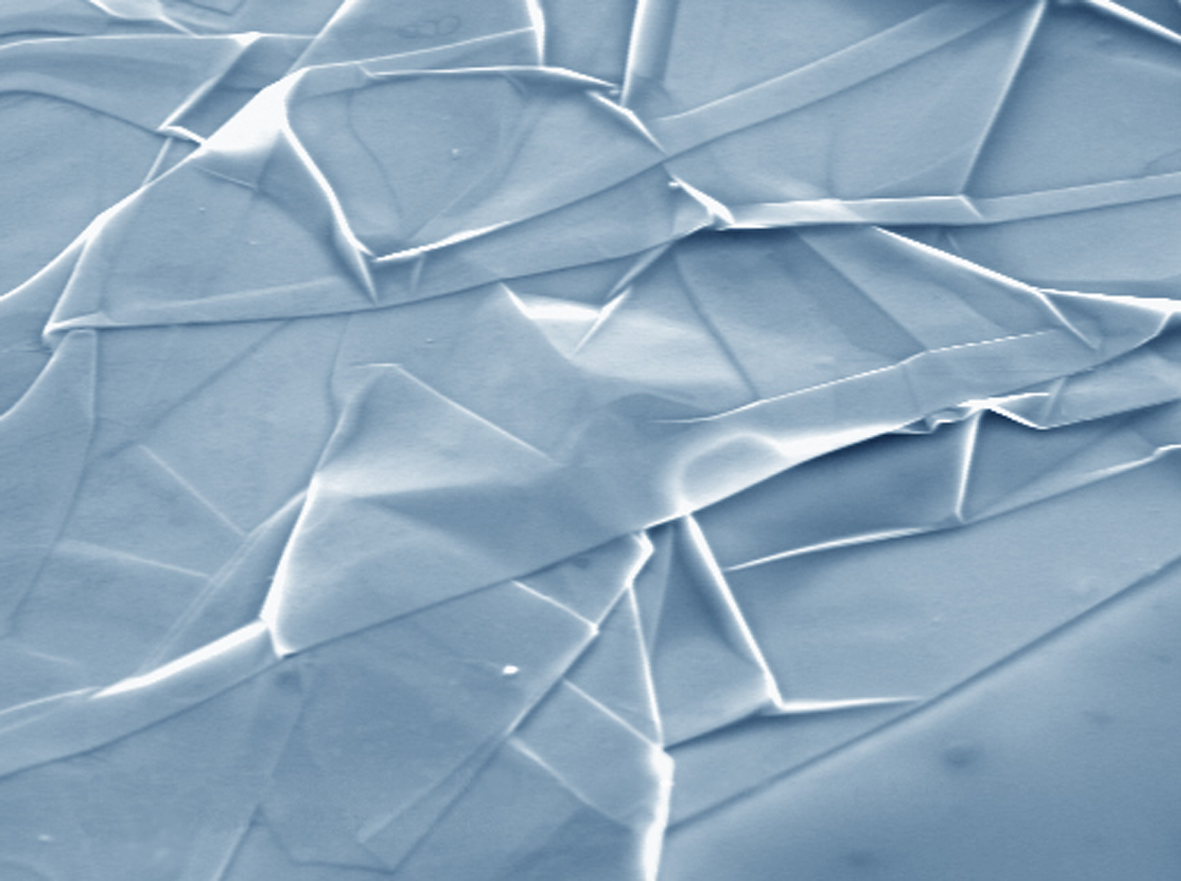This is Science: Is graphene life or death?

At the end of 2013, two remarkable articles were published. One is dedicated to creating a resonator or a graphene-based reference frequency generator, and the second is a review of real and future graphene. So what is waiting for graphene in the future - the life and flourishing of carbon electronics or death and oblivion?
Graphene-based mechanical oscillator
The transition to fully carbon electronics will require the creation of not only transistors, resistors and capacitors, but also oscillators and resonators that convert direct current into a periodic signal. They provide the so-called “clocking” or reference frequency in the chips, as well as responsible for timing in telecommunications. Accordingly, without this miniature device, it is impossible to imagine either a flash memory , a mobile phone, or a modern TV.
The most accurate are the resonators on the base of plates cut from single-crystal quartz along special planes , and if the accuracy is not so important, then they are replaced with resonators based on ceramics, for example, PZT . However, to the deep regret of all engineers in the world, this detail is almost the main stumbling block in the way of reducing the size of electronic devices.
')
And this is where nano- and micro-electromechanical devices ( NEMS and MEMS ) come to the rescue; the scientists from Columbia University, together with their colleagues from Korea, used the ideology to develop the graphene NEMS resonator. But not simple, but also capable of rebuilding the operating frequency within 14% with a change in the applied voltage.

a. A simplified diagram of the created resonator (in the inset SEM-micrograph of the device). b. Transmission spectrum for open circuit (S 21 ): amplitude (green) and phase (red). c. Output power spectrum for the created graphene resonator

The change in the frequency of the resonator with a change in V g
And as confirmation of the practical significance of their invention, the researchers collected a small FM radio transmitter using the graphene oscillator described above, after which they received and decoded the signal from the well-known PSY song (Koreans, what would they take from them ?!). You can listen to the recording on the Nature website or download it here .

Radio station based on graphene. a. Electrical circuit. b and c - transmitted and received signals, respectively
The article was published in the Nature Nanotechnology journal on November 17, 2013.
What is the future of graphene?
Impressive article ?! Of course! Indeed, since the discovery of this wonderful material, a decade has not passed, and a processor and resonator , capacities based on various carbon materials, have been created. Silicon learned to print on polymers. And it seems that there is happiness. There are bold projects that receive prestigious design awards Red Dot Design Awards Winner for storage stickers from graphene. And in Europe they are crazy about just mentioning these magic letters - graphene.
A similar situation was already in science 30 years ago, when high-temperature superconductivity was discovered and justified. It would seem: even a little bit, to find the right composition, and here it is - the solution to the problems of humanity in terms of the transmission of electricity for thousands of years. Tens of thousands of scientists switched to the search for the very oxide compounds, millions of dollars, marks and francs (yes, the euro was not even then), they poured on scientists, but ...
The reality turned out to be harsher, and much progress did not come out, everything stalled at temperatures of about 180-190 K and even then under pressure . Although, in fairness, it is worth noting that CERN uses superconducting magnets, many hospitals carry out magnetic tomography, even trains began to fly, levitating , but I think that this is only a small part of what people who worked with superconductors dreamed of.
At the end of 2013, the European mega-project, Graphene Flagship , was launched, under which it is planned to spend 1 billion euros of only “public” funds for 10 years, and there will also be private investment. And yes, Nokia and many European giants are also in business!
But wouldn't this project turn out to be the same race of scientific vanity as it happened 3 decades ago with superconductivity?
In this regard, I am very impressed with the review written by Mark Peplow and published in Nature just a couple of days after the publication of the article on the graphene resonator.
Let me briefly summarize its essence. Graphene is great stuff. On the one hand, it is elastic, that is, it bends. Graphene rolled up into a tube is a carbon nanotube whose diameter can vary from 1.5 nm to hundreds of nm. At the same time, graphene is “strong”, like Superman and hardworking like an ant, it is able to withstand enormous loads (the estimated tensile strength is ~ 1000 GPa).
On the one hand, graphene has a virtually zero forbidden band and very light electrons and holes, which makes it an ideal conductor capable of carrying signals faster than any other material on the planet, but this is its main drawback. How to stop the current? After all, all electronics works on the principle of on / off (current flows / current is blocked). That is, it is necessary to artificially create this most forbidden zone, or to change the paradigm: instead of on / off electronics, there will be electronics controlled by voltage, or in other words, some analogue of analog electronics (sorry for the pun).

On the other hand, it is transparent, that is, just perfect as a replacement for ITO in modern displays. However, two-dimensional systems themselves are not stable. Thus, the problem of creating a perfectly smooth graphene coating on any surface is a most difficult scientific and technical problem.

Graphene folds. A source
And it turns out that while graphene, although it seems to be a superman with a capital G instead of S, we cannot introduce it into production because of the Joker hiding behind his back. In confirmation of this, the author of the review cites the following statement by Tim Harper (Tim Harper) from the company Cientifica , which is engaged in the introduction of new technologies: "No one will just ruin the silicon if there are no really good reasons to do so." The latter means that while the resource of silicon, as a platform for creating microelectronic devices, will not be developed by more than 146%, we will not see a transition to the carbon era.
That is why the first stage of the program being implemented will be aimed at finding and creating prototypes of graphene-based devices, which, apparently, will necessarily include the resonators described above, various sensors (and even the magnetic field sensor was created on the basis of graphene ).
Well, we now live in an era of great accomplishments that can radically change our lives! Let's see what 2014 will give us.
PS: Successful New Year, Habrovchane!
PPS: For those who suffer, to plunge into the world of two-dimensional materials for electronics, there is another article-review .
Full list of published articles This is Science on GeekTimes:
This is Science: Simple and Cheap Solar Energy
This is Science: Is graphene life or death?
This is Science: Blow and Get Electricity
This is Science: Silicon Electronics: Bend Me Completely!
This is Science: Resilient quantum dot display
This is Science: Putting triboelectricity at the service of humanity
This is Science: 3D optical printing moves to the micro level
This is Science: What's inside a neuromorph chip?
This is Science: News from graphene fields
This is Science: 3D lithography to masses
This is Science: The discharge of alkaline batteries or why the battery jumps
This is Science: microcannons and nano-nuclei
This is Science: wearable electronics and triboelectricity. Part 1
This is Science: wearable electronics and triboelectricity. Part 2
Sometimes briefly, and sometimes not so much about the news of science and technology, you can read on my Telegram channel - welcome;)
Source: https://habr.com/ru/post/208286/
All Articles